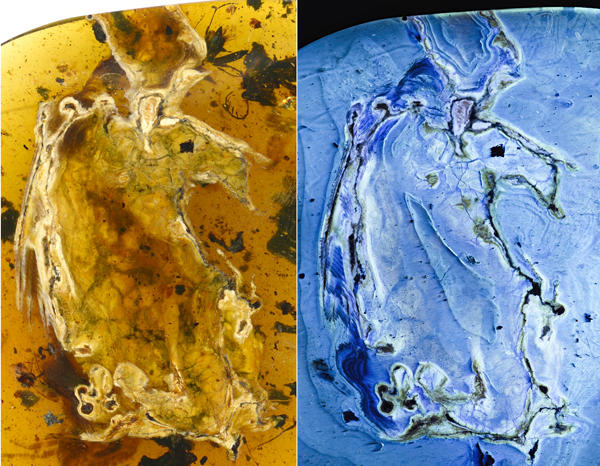


An ancient bird preserved in amber has been discovered, scientists from China, Canada, and the United States announced in Beijing Friday. It is the most complete fossil ever found.
The amber was found in Hukawng Valley of Kachin State, Myanmar, which is famous for its amber deposits.
The research result has been published on the English-language version of academic periodical Chinese Science Bulletin.
The bird, measuring 5 centimeters in length, was born in the Cretaceous Period, or about 100 million years ago, said Xing Lida, a professor at China University of Geosciences, and also one of the authors of the research paper.

Another co-author, Luis M. Chiappe, director of the Dinosaur Institute at the Natural History Museum of Los Angeles County, said that the bird discovered in the amber is as big as a bee hummingbird, the world’s smallest bird, mainly found in Cuba.
Xing's team had discovered a 7-centimeter bird in amber last June and a tail fossil of a non-avian dinosaur in December 2016.
The new discovery offers more anatomy information such as the base of the skull, spine, left forelimb, pelvis, and thighbone, according to young ornithologist Zou Jingmei, who is also one of the authors.

 Award-winning photos show poverty reduction achievements in NE China's Jilin province
Award-winning photos show poverty reduction achievements in NE China's Jilin province People dance to greet advent of New Year in Ameiqituo Town, Guizhou
People dance to greet advent of New Year in Ameiqituo Town, Guizhou Fire brigade in Shanghai holds group wedding
Fire brigade in Shanghai holds group wedding Tourists enjoy ice sculptures in Datan Town, north China
Tourists enjoy ice sculptures in Datan Town, north China Sunset scenery of Dayan Pagoda in Xi'an
Sunset scenery of Dayan Pagoda in Xi'an Tourists have fun at scenic spot in Nanlong Town, NW China
Tourists have fun at scenic spot in Nanlong Town, NW China Harbin attracts tourists by making best use of ice in winter
Harbin attracts tourists by making best use of ice in winter In pics: FIS Alpine Ski Women's World Cup Slalom
In pics: FIS Alpine Ski Women's World Cup Slalom Black-necked cranes rest at reservoir in Lhunzhub County, Lhasa
Black-necked cranes rest at reservoir in Lhunzhub County, Lhasa China's FAST telescope will be available to foreign scientists in April
China's FAST telescope will be available to foreign scientists in April